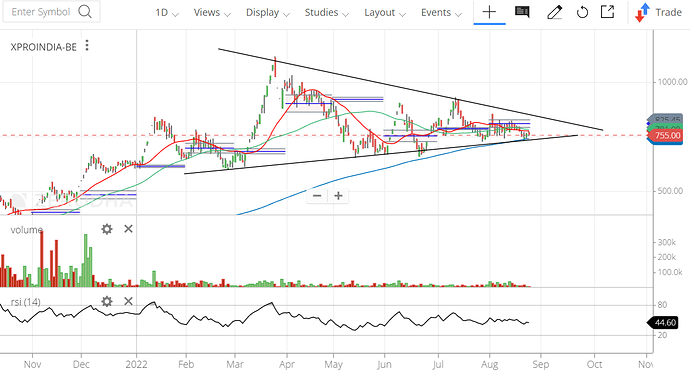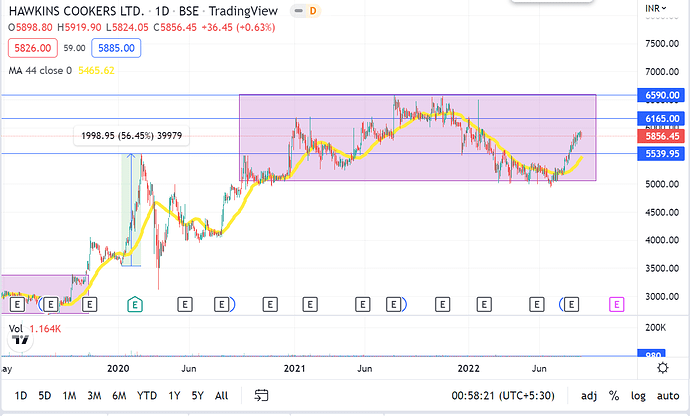@hitesh2710 bhai, I am curious to understand how you think one should approach stocks which have run up a lot on good fundamental reasons, and where one feels the business momentum is likely to continue. I will illustrate my question with two examples and would request your view on both, and in particular on when one should enter. Not sure if you track either of these companies, so I’m putting the charts and a brief fundamental thought processes for both.
- Vadilal Industries
The stock has been on an absolute tear and has trippled in the last six months. The US business (about 25% of the total revenue) has been doing very well. They are the biggest Indian ice cream brand in the US and have a stronghold on the ethnic distribution with their own warehouses - the only major Indian FMCG brand in the US to have this. This gives them a massive moat against competition and has enabled them to launch many more products like Indian sweets, frozen foods, frozen Indian vegetables etc. I met the management of the US business recently and they are extremely bullish on the market potential and seemed very capable. The India business did pretty well too last quarter, I am studying what led to growth there and how sustainable it is.
Even after the run up, it trades at under 2 times total sales and about 22.5 times earnings, with a huge runway for growth and operating leverage in their US business given the established distribution network.
How does one decide what the right entry point is in this kind of a setup? There is always a fear that there will be profit taking, but waiting means the price gets further away and fills some of the valuation gap.
-
Xpro:
This is a slightly well researched story. Essentially they have two divisions:
a) Coex division: 75% of their revenues, a proxy play on domestic white goods manufacturing, mainly refrigerators. This is a medium but stable margin business and has a high market share selling to the refrigerator industry. Great and entrenched customer relationships. PLI and domestic manufacturing push are an added boost.
b) Biax division is a domestic monopoly (30% market share and rest is imports) making dielectric films used in many types of capacitors, and so is a play on the boost in EV, solar and other capacitor applications. They are doubling down on these high margin dielectric films over the next two years or so, and will add further capacities from there.
The company was unprofitable for very long as they had an inverted duty structure over the years, which the government corrected in the last two years. The stock went up some 75 times in 18 months from Sep 2020 to April 2022, and has then consolidated down on low volumes. It now trades at about 23 times earnings and almost exactly at 200DMA. I have also drawn a couple of wedge like trend lines.
Again, how does one approach this? Fundamentally it looks like a long runway picks and shovels growth story on multi-sector manufacturing in India. But it has gone up massively in the last two years and who knows till when people will book profits. What is the best way of arriving at an appropriate entry point for these companies?
Edit: For reference, the blue, green and red lines on the charts are 200DMA, 50DMA and 20DMA respectively.
Disclosure: 3% of PF in Vadilal from 2200 and want to raise it at the right price, no holdings yet in Xpro.



